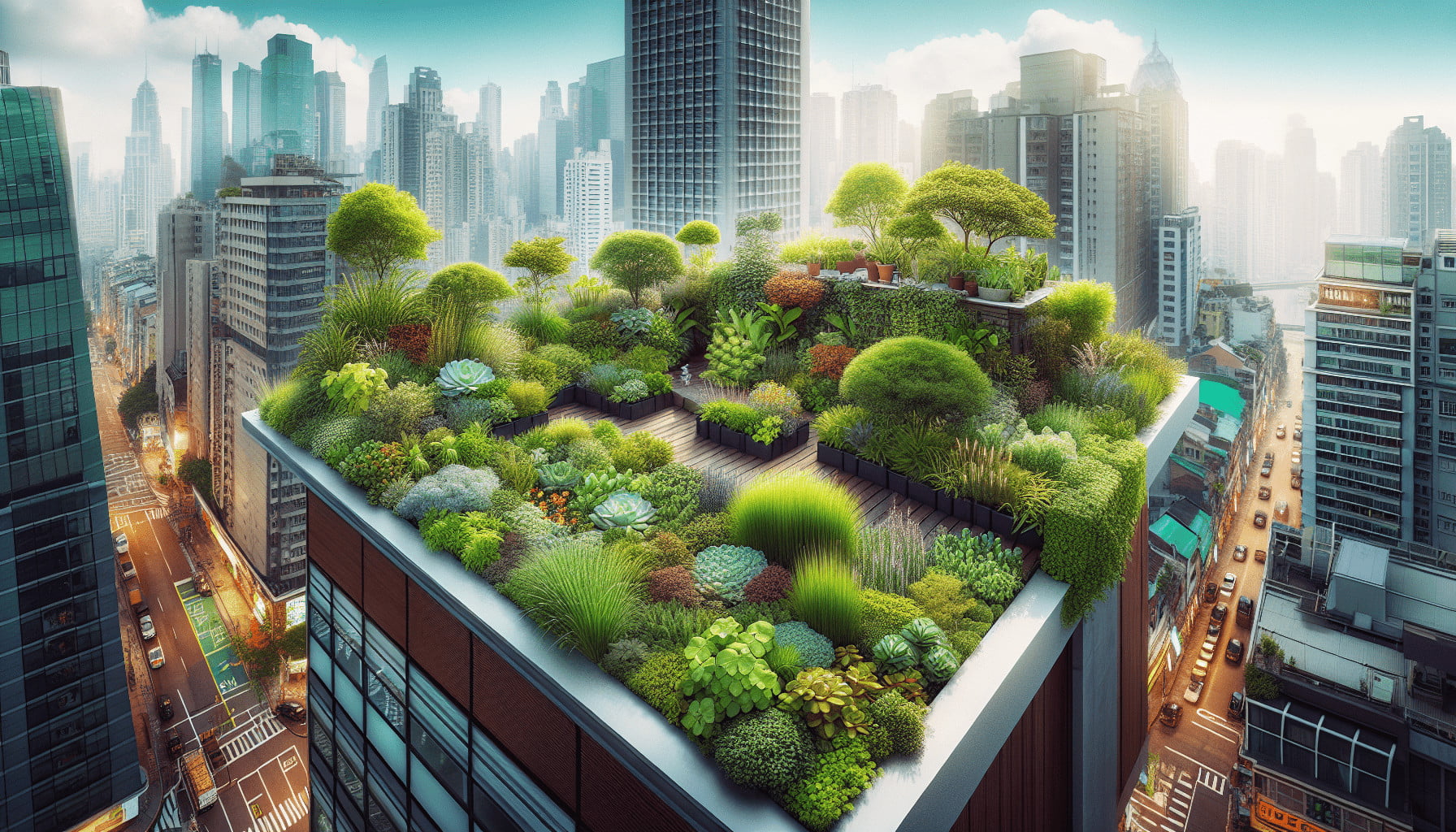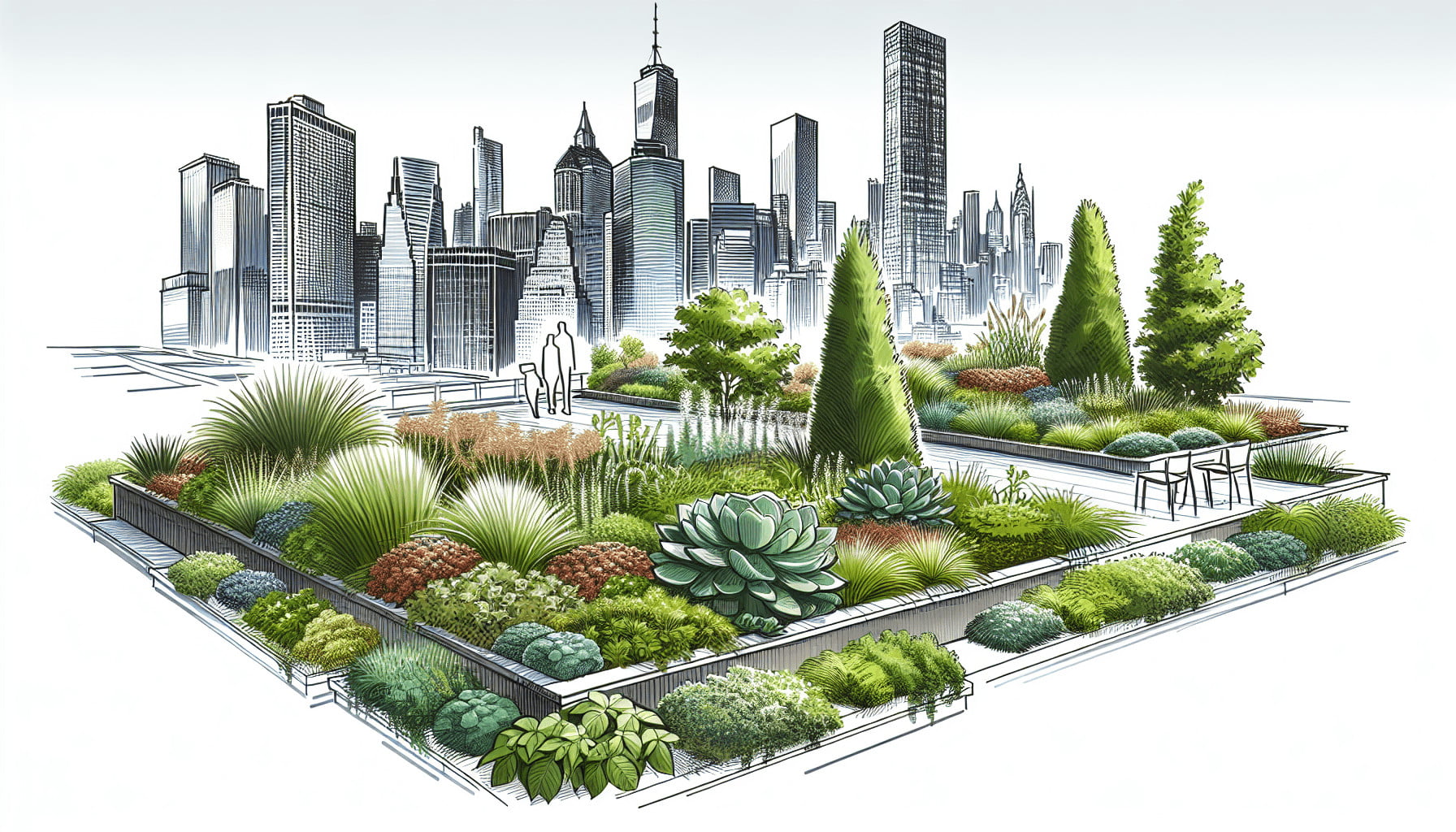Are you considering installing a green roof and wondering how to choose the right plants? You’re in the right place! Picking the right vegetation for your green roof is crucial for its success and longevity. The right plants not only enhance aesthetic appeal but also provide numerous environmental benefits. Let’s dive into how you can make the best choice for your green roof.
Understanding Green Roofs
Before getting into the specifics of plant selection, it’s essential to understand what a green roof is and its benefits.
What is a Green Roof?
A green roof is a layer of vegetation planted over a waterproofing system installed on top of a flat or slightly sloped roof. This type of roof is also known as a living roof or rooftop garden.
Benefits of Green Roofs
Green roofs offer a myriad of benefits:
- Environmental Benefits: They help reduce urban heat island effects, manage stormwater, and improve air quality.
- Economic Benefits: Green roofs can extend the lifespan of your roof membrane and reduce energy costs by providing natural insulation.
- Aesthetic Benefits: They transform otherwise underutilized spaces into beautiful, thriving green areas.
Types of Green Roofs
There are different types of green roofs, each with its own set of suitable plants. Understanding the type of green roof you have or plan to install will significantly impact plant selection.
Extensive Green Roofs
These are lightweight, have shallow soil depth (between 2-6 inches), and are generally low-maintenance. They are often used for their environmental benefits rather than their aesthetic appeal.
Suitable Plants for Extensive Green Roofs:
- Sedums
- Succulents
- Grasses
Intensive Green Roofs
These are heavier, with deeper soil (more than 6 inches), and can support a wider variety of plant life, including shrubs and small trees. They are more like traditional gardens.
Suitable Plants for Intensive Green Roofs:
- Perennials
- Shrubs
- Small Trees
- Herbaceous Plants

Factors to Consider When Choosing Plants
When selecting plants for your green roof, several factors come into play. These include climate, exposure, soil depth, maintenance, and aesthetic goals.
Climate
Understanding the local climate is crucial. Not all plants are suitable for all climates. Consider factors like temperature ranges, precipitation levels, and seasonal changes.
Tips for Selecting Plants Based on Climate:
- Choose drought-tolerant plants for arid climates.
- Opt for frost-resistant plants in colder regions.
- Select plants with high humidity tolerance for humid areas.
Exposure
The level of sunlight and wind exposure can significantly affect plant growth.
Sunlight Exposure:
- Full Sun: Plants that thrive in full sun conditions include succulents, grasses, and certain wildflowers.
- Partial Shade: Opt for plants like ferns, hostas, and certain herbs.
- Full Shade: Ideal for mosses, ferns, and shade-loving perennials.
Wind Exposure:
- Select sturdy plants for windy locations to avoid damage and ensure longevity.
Soil Depth and Load-Bearing Capacity
The depth of the soil and the load-bearing capacity of the roof are crucial considerations. Ensure your roof can handle the weight of the soil, plants, and water retention.
Soil Depth Recommendations:
- Shallow (2-6 inches): Suitable for sedums, succulents, and grasses.
- Medium (6-12 inches): Supports a wider variety of perennials and herbs.
- Deep (more than 12 inches): Suitable for shrubs, small trees, and vegetable gardens.
Maintenance
Consider how much time and effort you can commit to maintaining your green roof. Some plants require more care than others.
Low-Maintenance Plants:
- Sedums
- Succulents
- Native grasses
High-Maintenance Plants:
- Perennials
- Shrubs
- Small trees
Aesthetic Goals
What kind of look are you aiming for? Whether you want a colorful, flowering garden or a simple, green expanse, your aesthetic goals will influence plant selection.
Aesthetic Considerations:
- Color: Choose a variety of plants to provide year-round color.
- Texture: Mix and match different textures for an interesting visual appeal.
- Height Variation: Incorporate plants of varying heights for depth and dimension.
Best Plants for Various Green Roof Types
Let’s look at some specific plant recommendations based on the type of green roof you have.
Extensive Green Roofs
Sedums:
- Stonecrop (Sedum acre)
- Ice Plant (Sedum spectabile)
Succulents:
- Hens-and-Chicks (Sempervivum tectorum)
- Houseleek (Sempervivum montanum)
Grasses:
- Blue Fescue (Festuca glauca)
- Little Bluestem (Schizachyrium scoparium)
Intensive Green Roofs
Perennials:
- Lavender (Lavandula angustifolia)
- Coneflower (Echinacea purpurea)
Shrubs:
- Dwarf Boxwood (Buxus sempervirens)
- Dwarf Japanese Garden Juniper (Juniperus procumbens)
Small Trees:
- Dwarf Alberta Spruce (Picea glauca)
- Japanese Maple (Acer palmatum)
Herbaceous Plants:
- Achillea (Achillea millefolium)
- Daylilies (Hemerocallis spp.)

Combining Functionality with Aesthetics
It’s important to strike a balance between functionality and aesthetics. Here are a few tips to help you achieve that:
Functional Considerations
- Stormwater Management: Choose plants with deep root systems to help absorb and filter rainwater.
- Biodiversity: Select a mix of native species to support local wildlife.
- Insulation: Opt for plants that provide good coverage and insulation to help reduce energy costs.
Aesthetic Considerations
- Seasonal Interest: Choose plants that offer different blooms and colors throughout the year.
- Focal Points: Incorporate eye-catching plants to serve as focal points.
- Harmony: Ensure that the plant colors and textures harmonize with each other and the surrounding environment.
Practical Steps for Planting Your Green Roof
Once you’ve selected your plants, it’s time to get them onto your roof. Here’s a step-by-step guide:
1. Prepare the Roof
Ensure that your roof is structurally sound and capable of supporting the additional weight of the green roof system. Employ a professional roof contractor if necessary.
2. Install Waterproofing and Drainage Layers
These layers are crucial to protect your roof structure and ensure proper water management.
3. Add Soil
Select a lightweight, well-draining growing medium. The depth of the soil should match the needs of the plants you’ve chosen.
4. Plant Selection and Placement
Arrange your selected plants according to their sunlight and water needs. Taller plants should generally go towards the center, while shorter ones should be around the edges.
5. Initial Watering
Water the new plants thoroughly after planting. This helps them settle into their new environment.
Caring for Your Green Roof
After planting, ongoing care is necessary to ensure your green roof thrives.
Watering
The watering needs will vary based on the types of plants you’ve chosen and your local climate. A general rule is to water new plants more frequently until they are established.
Fertilizing
Use a slow-release, balanced fertilizer to provide essential nutrients to your plants.
Weeding
Regularly remove weeds to prevent them from competing with your chosen plants for nutrients and water.
Monitoring
Inspect your green roof regularly for signs of pest infestations, diseases, or other issues. Prompt action can help mitigate potential damage.
Seasonal Care Tips
Different seasons require different care regimes. Here’s a quick guide:
Spring
- Perform a thorough inspection.
- Replant or replace any dead plants.
- Apply a slow-release fertilizer.
Summer
- Ensure consistent watering, especially during dry spells.
- Watch for pests and diseases.
Autumn
- Remove fallen leaves and debris.
- Cut back any overgrown plants.
- Prepare winter protection for sensitive plants.
Winter
- Minimize foot traffic on the roof to avoid compaction.
- Check for any winter damage and plan for spring repairs.
Troubleshooting Common Issues
Even the most well-planned green roofs can encounter problems. Here are some common issues and how to address them:
Poor Drainage
Solution: Ensure the drainage layer is functioning correctly. You may need to adjust the slope or add additional drainage outlets.
Plant Stress or Death
Solution: Confirm that the plants are suitable for the prevailing conditions (light, water, soil). Replace unsuitable plants with more appropriate ones.
Pest Infestations
Solution: Use organic or chemical treatments as necessary. Introducing natural predators can also be effective.
Leaks
Solution: Ensure the waterproof membrane is intact. Leaks should be addressed immediately by professional roofers.
Conclusion
Choosing the right plants for your green roof is a detailed and thoughtful process, but it’s one that will pay off with aesthetic, environmental, and economic benefits. By considering climate, exposure, soil depth, maintenance, and your aesthetic goals, you can create a thriving green roof that serves multiple purposes. Remember, the right plant choice can make all the difference, transforming your roof into a sustainable oasis. So go ahead and start planning your green roof today!
